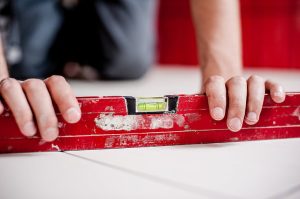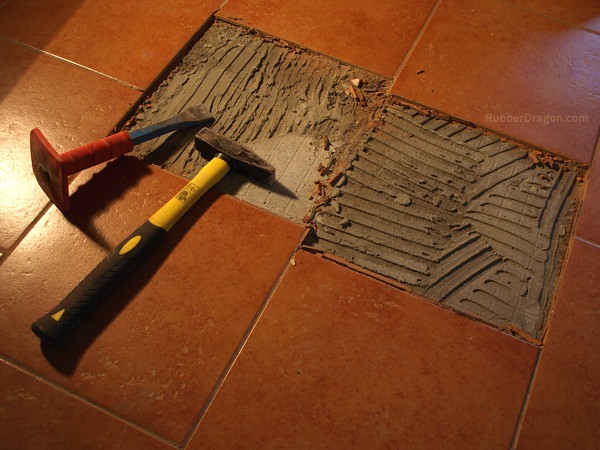When floor tiles start to shift, it can be frustrating and even concerning. This issue, if left unchecked, can lead to more severe problems, such as tile fixing cracking, grout deterioration, or even structural damage in extreme cases. Whether the tiles are ceramic, porcelain, or natural stone, shifting tiles signal an underlying problem that needs prompt attention. In this article, we’ll go through what causes floor tiles to shift, how to address the problem effectively, and preventive measures to avoid future issues.
Why Do Floor Tiles Shift?
Floor tiles shift for several reasons, and understanding the cause is essential to effectively addressing the issue. Here are some common reasons:
- Poor Adhesive Application: One of the most common reasons for tile shifting is an inadequate amount of adhesive. Without a strong adhesive bond, tiles can become loose over time.
- Foundation Movement: If your home’s foundation settles or shifts, it can impact tile stability. Shifting foundations lead to floor movements that, in turn, affect the tiles above.
- Moisture Issues: Moisture seepage beneath tiles, often from an unsealed subfloor or cracked grout, can weaken the adhesive and lead to shifting.
- Thermal Expansion: Tiles, especially natural stone, expand and contract with temperature fluctuations, which can cause them to shift if expansion joints aren’t in place.
To effectively deal with shifting tiles, proper tile fixing technisque can secure them in place and prevent further movement.
Step 1: Assess the Extent of the Problem
Before starting any repairs, it’s crucial to assess the scale of the problem:
- Check Individual Tiles: Tap each tile gently with the handle of a screwdriver or a small hammer. A hollow sound indicates that the tile has come loose and is no longer fully bonded to the floor.
- Inspect Grout Lines: Look closely at the grout lines around the affected tiles. If the grout is cracked or loose, it suggests the shifting has been ongoing for some time and may indicate a more extensive underlying issue.
- Evaluate the Underlying Floor: Examine the subfloor, if possible. In bathrooms or areas with high moisture exposure, water damage might be present, requiring additional repairs.
This inspection step will help you decide whether you can handle the repair yourself or need to call in a professional.
Step 2: Remove Loose Tiles Carefully
If you’ve identified loose tiles, the next step is to remove them carefully to prevent further damage.
- Loosen the Grout: Use a grout removal tool or oscillating multi-tool to remove the grout around the affected tiles. This step helps reduce tension on the tile and minimizes the risk of breakage.
- Lift the Tile Slowly: Gently insert a putty knife or chisel under the tile and carefully lift it. If you encounter resistance, apply gentle pressure until the adhesive bond breaks.
- Clean the Area: Once removed, scrape away any old adhesive or mortar from both the tile and subfloor. Clean both surfaces thoroughly to ensure the new adhesive bonds properly.
Taking your time during this step will prevent accidental tile breakage and give you a clean surface to work with.
Step 3: Reapply Adhesive and Reset the Tile

With the area prepped and ready, it’s time to reset the tile with fresh adhesive:
- Choose the Right Adhesive: Select a high-quality adhesive that suits the type of tile and subfloor material. Powdered adhesive that can be mixed as needed tends to provide a strong and durable bond.
- Spread the Adhesive Evenly: Use a notched trowel to spread a thin, even layer of adhesive on the subfloor. The notches create grooves that improve adhesive contact and ensure the tile sits level.
- Position the Tile Carefully: Press the tile gently but firmly into place, ensuring it aligns with surrounding tiles. Use tile spacers if necessary to maintain consistent grout lines.
This step is key to creating a solid bond that will hold the tile in place for the long term.
Step 4: Regrout and Seal the Tile
Once the adhesive has set (usually within 24 hours), the final step is regrouting and sealing the area.
- Apply Grout Evenly: Use a rubber grout float to apply grout between the tiles, pressing it firmly into the joints. Wipe away excess grout with a damp sponge and smooth the lines.
- Allow Grout to Cure: After application, let the grout cure for at least 24 hours before exposing the area to regular use. This curing period is crucial for long-term stability.
- Seal the Grout: Once the grout is dry, apply a grout sealer to protect it from moisture and stains. This step is especially important in high-traffic or moisture-prone areas, as it helps prevent future shifting.
Properly grouting and sealing the tiles will give them added protection against moisture, reducing the risk of future movement.
Preventive Tips to Avoid Future Tile Shifting
Once you’ve resolved the immediate issue, it’s wise to take preventive steps to avoid similar problems in the future:
- Install Expansion Joints: Expansion joints allow the tile floor to expand and contract without cracking or shifting. They’re essential in large tiled areas or spaces that experience temperature changes.
- Control Moisture Levels: Avoid water seepage by sealing grout and addressing any plumbing or water leaks promptly. In bathrooms, a well-sealed subfloor can go a long way in protecting tiles.
- Use a Quality Adhesive: Investing in a high-quality adhesive designed for your specific tile and subfloor material ensures a secure and long-lasting installation.
- Regular Inspections: Periodically check for signs of tile movement, especially in high-traffic areas. Addressing minor shifts early can prevent extensive repairs later.
When to Call a Professional
In some cases, shifting tiles indicate more serious structural issues or persistent moisture problems that require professional assessment. If you’ve tried the above steps and the problem persists, or if the tiles continue to move shortly after resetting, consulting a professional tiler or contractor is advisable.
Addressing shifting tiles promptly and following best practices for tile installation and maintenance will help ensure your floor remains stable, safe, and visually appealing. With the right approach, you can restore the integrity of your tiled floor and prevent similar issues from arising in the future.











